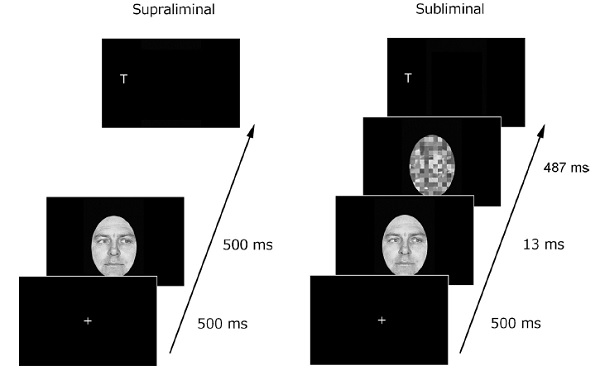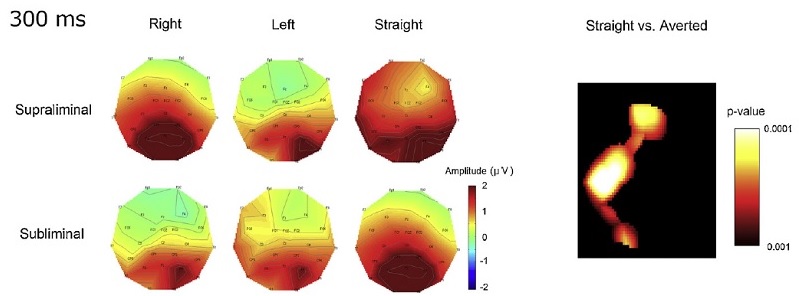SATO Wataru Laboratory
Spatiotemporal commonalities of fronto-parietal activation in attentional orienting triggered by supraliminal and subliminal gaze cues: An event-related potential study
(Uono, Sato, Sawada, Kochiyama, & Toichi: Biol Psychol)
Eye gaze triggers attentional shifts with and without conscious awareness.
It remains unclear whether the spatiotemporal patterns of electric neural activity are the same for conscious and unconscious attentional shifts.
Thus, the present study recorded event-related potentials (ERPs) and evaluated the neural activation involved in attentional orienting induced by subliminal and supraliminal gaze cues.
Nonpredictive gaze cues were presented in the central field of vision, and participants were asked to detect a subsequent peripheral target.

The mean reaction time was shorter for congruent gaze cues than for incongruent gaze cues under both presentation conditions, indicating that both types of cues reliably trigger attentional orienting.
The ERP analysis revealed that averted versus straight gaze induced greater negative deflection in the bilateral fronto-central and temporal regions between 278 and 344 ms under both supraliminal and subliminal presentation conditions.
Supraliminal cues, irrespective of gaze direction, induced a greater negative amplitude than did subliminal cues at the right posterior cortices at a peak of approximately 170 ms and in the 200-300 ms.

These results suggest that similar spatial and temporal fronto-parietal activity is involved in attentional orienting triggered by both supraliminal and subliminal gaze cues, although inputs from different visual processing routes (cortical and subcortical regions) may trigger activity in the attentional network.
Return to
Recent Research.
Return to
Main Menu.

